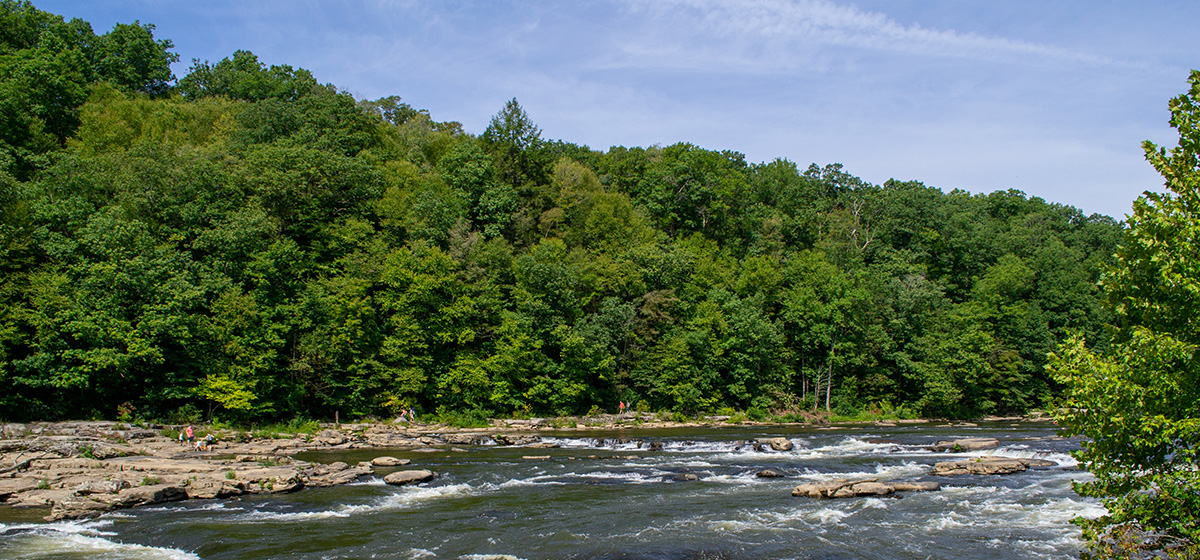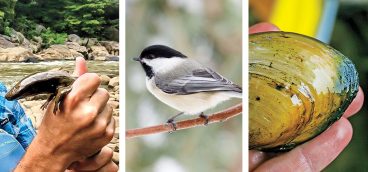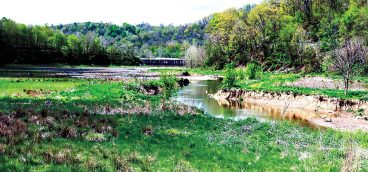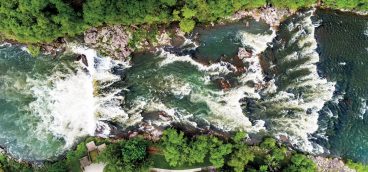Where Nature and History Collide

Here are a few state parks in Pennsylvania that offer nature at its most dramatic and some history of what life was like long before barcodes, internet and smart phones.
McConnells Mill
The park wraps around a restored 19th century gristmill that ground buckwheat, oats and corn with the force of the wild stretch of Slippery Rock Creek along which it lies. It offers a bit of history and a section of the national North Country Trail, which runs from New England to North Dakota. The rugged terrain welcomes climbers. Trails range from a difficult one that descends a gorge to an easy one that leads to a restored lime kiln and the cascades of Hells Hollow Falls, where the power of nature is on display. Lawrence County, 40 miles from Downtown Pittsburgh
Ohiopyle
The Native American Lenape people named the stretch of the Youghiogheny River that flows through the park, “ahi opihele,” meaning “it turns white.” The river tumbles over falls and cascades as it knifes through a rocky, forested valley. It dashed the hopes of a young George Washington, who until he encountered it in 1754 had hoped the Yough could serves as a water route to the “forks of Ohio,” where Pittsburgh now stands. Today, it’s a place where whitewater rafting and biking rule and the beauty of nature is striking. Ohiopyle, Fayette County, 70 miles from Downtown Pittsburgh
Oil Creek
The park was an oil boomtown of 10,000 people 150 years ago after Edwin Drake drilled the first commercially successful oil well and launched the petroleum industry. Remnants of oil towns can be seen at Petroleum City and farther upstream in Titusville, which has a Drake museum and an excursion train. There’s backcountry camping in the forest where derricks had stood, places to picnic, a bike trail and Oil Creek itself. Once barren of life from industrial pollutants, it’s now an example of how nature nurses itself back to health when left alone. Rouseville, Venango County, 100 miles from Downtown Pittsburgh
Sinnemahoning
Evidence discovered in creek beds suggests that 12,000 years ago Native Americans settled in the area that is now the park. Loggers claimed it in the 19th century. Today, it is one of the few places in the state in which rarely seen elk call home and visitors can catch a glimpse of a bald eagle dive-bombing Sinnemahoning Creek for fish to feed her young. Nearby are ruins of a dam that burst in 1911 and destroyed much of the town of Austin. Cameron and Potter Counties, 160 miles from Downtown Pittsburgh
Leonard Harrison
The park’s visitor center sits above the Grand Canyon of Pennsylvania, providing a panoramic view of the now densely forested gorge that Pine Creek carved as meltwater during the last ice age. Whether green or in their autumn colors, the 20,000-year-old tree-covered gorge is a Keystone State spectacle. A bike trail travels Pine Creek valley below, a place for backcountry canoeing, kayaking, fishing and, perhaps, a rattlesnake sighting. If camping isn’t your thing, nearby Wellsboro has places to eat and sleep. Tioga County, 225 miles from Downtown Pittsburgh
Ole Bull
This remote, mountainous park occupies the site of a 19th century Norwegian colony conceived by Ole Bull, a famous violinist in the 1850s. Some 300 Norwegian settlers were recruited to the “black forest” of Kettle Creek Valley. But it proved too difficult to farm. The colony lasted one year. A few winding miles south is Cross Fork, once a logging boomtown. In the park, visitors find sloping wilderness, wildlife, a trout stream and a trail leading to overgrown remnants of Bull’s unfinished castle and the vista that inspired him to build it. Potter County, 200 miles from Downtown Pittsburgh





